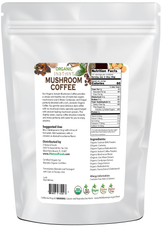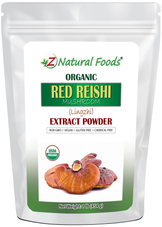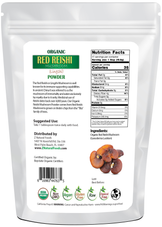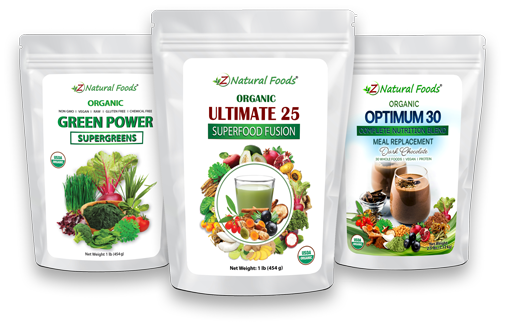Description
Description
Adaptogens are a supportive tool for managing a healthy stress response through nonspecific physiological reactions.
What makes all adaptogens unique is their ability to adapt to the harsh conditions in which they are grown.
This adaptability allows them to thrive and become robust plants.
As the research on adaptogens has been compiled, herbalists and scientists have learned and concluded how each adaptogen's energy (warming, cooling, drying, moistening) and constituents balance allows them to be used in a more specific targeted approach.
Medicinal mushrooms contain many nourishing compounds that work synergistically to support overall well-being. While all mushrooms have certain nutritive qualities in common, they also have unique attributes, allowing them to potentially support and uniquely focus on individual systems.
Our mission is to answer your questions and provide a thorough explanation and the critical details necessary to understand the topic. So, today we will answer the question…
What Mushrooms are considered Adaptogens?
In order to answer this question thoroughly, it is essential to understand the criteria for how an adaptogen is defined and how they work.
The following are primary points that define what a plant or fungi must do to be considered an adaptogen.
Adaptogens must:
- Be nontoxic at clinical dosage
- Increase the resistance of the hormonal and immune systems to all kinds of stressors through a nonspecific physiological response.
- Normalize body function no matter how external stressors have altered them.
One of the leading pioneers of stress research was Canadian professor Hans Selye, Ph.D., who was widely known for contributing to stress research in developing the General Adaptation Syndrome (GAS) concept in 1936. Go here for more information about adaptogens.
This syndrome has three primary stages of progression in the human stress response.
The three stages are as follows:
Stage 1 The alarm stage:
This is the immediate reaction to a stressor, otherwise known as fight or flight. This stage prepares the body for physical activity and releases stress hormones like adrenaline, noradrenaline, and cortisol to allow you to perform a specific task for survival. But due to its extreme nature, it can harm the immune system, which can leave a person at greater risk of illness during this phase. This is part of adapting when you take from one area and give to another to support survival, as described in the resistance stage below.
Stage 2 The resistance stage:
In this phase, the body adapts to the external stressor. Based on the stressor, many possible adaptation responses can take place. The specific responsibilities will involve the body allocating the proper tools to repair the damage and support the area that needs it most.
Stage 3 The adrenal maladaptation or exhaustion phase:
During this phase, the stressor has been present for an extended period. The body begins to struggle because it is drained of reserves. This is a perilous stage because it can lead to more significant issues, such as stroke, heart attack, and infections, if not resolved promptly.
But wait, there's more….Donald Yance, Author of Adaptogens in Medical Herbalism, proposes the idea that a fourth stage should be added to Dr. Selye’s General Adaptation Syndrome (GAS) concept called Restore and Revitalize.
Based on his clinical experience and observations regarding the application of adaptogenic compound formulas that include companion antioxidant compounds and their effect on the human stress response.
Stage 4 Recovery and Healing
He believes the value of these formulas for maintaining and restoring homeostasis “lies in their ability to enhance the four R’s.” His fourth stage hypothesis is that once you are back in an “anabolic positive” state, where energy recovery occurs, all energy systems and networks must be fully restored to complete the revitalization process.
Many plants and fungi not considered true adaptogens can fulfill the above criteria.
What we have learned is that what makes plants and fungi an actual adaptogen is their ability to work through one or both of the body’s master control systems.
- The HPA Axis (Hypothalamic-Pituitary-Adrenal Axis) is a complex system of neuroendocrine pathways and feedback loops that maintain and support homeostasis in response to chronic stress. The HPA axis interfaces the endocrine, nervous, immune, digestive, reproductive, and cardio systems.
- The SAS (Sympatho Adrenal system, aka fight or flight) is a complex system that connects the sympathetic nervous system to the adrenal medulla. In simple terms, it is our fight-or-flight response. A triggered response floods our system with adrenalin and releases hormones epinephrine and norepinephrine from the adrenal medulla. This response increases blood pressure, blood sugar, and heart rate and suppresses digestion. This releasing of hormones and redistribution of blood allows the mind and body to respond and survive.
So, the answer to the above question is that while many medicinal mushrooms have adaptogen-like qualities, only two are considered true adaptogens based on the above criteria.
The two mushrooms that are considered adaptogens are:
Red Reishi Mushroom
While the red reishi mushroom is shown to be a true adaptogen, this powerful mushroom is well-known and respected for so much more. Red Reishi is known as “The Mushroom of Immortality” and has a long and well-documented history in traditional Chinese medicine. Because of its ability to potentially support a healthy aging process via nourishing what Chinese medicine calls “The Three Treasures.”
- Jing is essence primarily stored in the kidneys. Jing is one’s constitution, regulates the body’s growth and development, and works with Qi to protect the body from harmful external conditions. Poor constitution, blood loss, and excessive sexual activity can cause jing essence deficiencies.
- Qi is a life force or vital energy stored in the kidneys. Both the physical and emotional are manifested as Qi. The Qi in our body is derived from two sources. First, it is inherited from our parents, and the second is derived from essential substances like air, food, and water. Deficiencies are caused by poor nutrition and digestion, chronic stress, and constrained breathing.
- Together, Jing and Qi are believed to form the foundation for Shen.
- Shen is the emotional and spirit layer of our being that reflects the state of our nervous system. Shen lives in the heart and is said to “preside over the activities that take place in the spiritual and mental planes.” Because Shen lives in the heart, people with disturbed Shen may experience anxiety, stress, difficulty breathing, and insomnia. In such cases, the primary weakness is from the spleen, which cannot generate enough blood to nourish the heart and anchor the Shen.
Red Reishi primarily comprises complex carbohydrates called water-soluble polysaccharides, triterpenoids, proteins, and amino acids. Thanks to modern techniques for performing tissue cultures, we know that reishi has around 16,000 genes that code for more than 200,000 compounds, and 400 are active constituents. Red Reishi could arguably be one of the greatest tonics on earth and may support a healthy immune system response and liver function. Reishi is highly revered for promoting the growth of wisdom.
A study examining reishi mushroom extract's effects on neurasthenia (Fatigue, persistent body weakness, and exhaustion after minimal effort) concluded that reishi was “significantly superior to placebo with respect to the clinical improvement of symptoms in neurasthenia.”
Cordyceps mushrooms
Researched for its ability to support vitality and performance, strengthen the body and mind, and support a healthy stress response, this elite-level Jing tonic and superstar of the mushroom world is categorized as an actual adaptogen and revered by tonic herbalists worldwide. Sweet in flavor and warm in temperature, cordyceps is famous for nourishing both Yin and Yang, supporting the kidneys and lungs, supporting life capacity and life force reserves, and is considered a fantastic tonifier of QI.
Cordyceps is a treasure trove of bioactive compounds like all other medicinal mushrooms. Some of the primary ones which have been researched and thought to support cordyceps “life-supporting” effects are
- Nucleosides
- Polysaccharides
- Sterols
- Amino Acids
- Polypeptides
- Cordycepin
A double-blind, placebo-controlled study using 28 individuals examined whether acute and chronic supplementation of cordyceps improves tolerance to high-intensity exercise. Here’s what the study found:
- “One week of supplementation elicited no significant time × treatment interaction for VO2max (p=0.364), VT (p=0.514), TTE (p=0.540), RPP (p=0.134), AvgP (p=0.398), or %drop (p=0.823).”
- “After three weeks, VO2max significantly improved (p=0.042) in MR (+4.8 ml·kg−1·min−1), but not PL (+0.9 ml·kg−1·min−1). Analysis of 95% confidence intervals revealed significant improvements in TTE after 1- (+28.1 s) and three weeks (+69.8 s) in MR, but not PL, with additional improvements in VO2max (+4.8 ml·kg−1·min−1) and VT (+0.7 l·min−1) after 3-weeks.”
Therefore, it was concluded, “Acute supplementation with a cordyceps militaris containing mushroom blend may improve tolerance to high-intensity exercise; greater benefits may be elicited with consistent chronic supplementation.”
Finally, a study examining the effects of reishi and cordyceps on improving training conditions and outcomes concluded the following. After three months of supplementation, the testosterone/cortisol ratio changed statistically significantly, thereby protecting the athletes from NFO (nonfunctional overreaching) and OTS (overtraining syndrome). Antioxidant activity was measured by quantifying the scavenging ability of the human serum on the synthetic free radical DPPH. After three months of fungal supplementation, the data demonstrate an increased scavenger capacity of free radicals in the athletes' serum after the race, thereby protecting the athletes from oxidative stress.
In conclusion, while medicinal mushrooms all have similar general constituents, attributes, and the ability to nourish in common, they are all unique in their own way.
Medicinal mushrooms all have a wonderfully rich usage history and are revered and respected worldwide as powerful tonics.
Because of their nourishing qualities, fungi have been, and will continue to be, the focus of research for many years to come. Their unique attributes, unlimited potential, and the untapped information we are continuously learning are what make the fungi world so intriguing.
Go here to review all of our Mushroom Powders, where you can also review our Cordyceps and Red Reishi mushroom powders:

















































